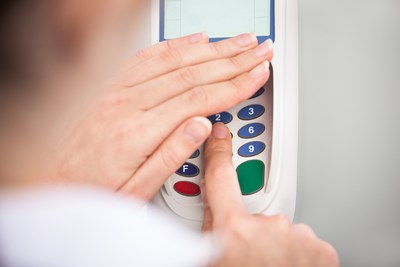Mobile payment apps have the potential to revolutionize the way we shop. However, they haven’t caught on like wildfire. What is keeping the mobile wallet from replacing the chunky billfold or cluttered purse of America’s shoppers? Many people aren’t familiar with the technology behind mobile wallets, and as a result, don’t feel comfortable treating their phone like a mobile credit card. However, once you learn how these mobile payment applications work—and how safe and convenient they are—you’ll probably consider making the switch.
How a Traditional Credit Card Payment Works
Before delving into the works of a mobile payment app transaction, I’d like to go into the process of a traditional card swipe transaction. Your black-strip credit card has its very own identification number. When you swipe your card at a terminal, the retailer’s system runs your card’s number, along with the store’s individual merchant number, then checks with your bank to see if your have enough credit (or money in your checking account if you’re using a debit card).
In the moments that your card is being authorized, the system is transferring the money from your bank to the merchant’s. Whenever you shop at another store, the process repeats itself: your personal card identification is authorized, provided that you have the funds or credit, and the transaction is processed.
How Mobile Credit Card Payments Work
Many people hesitate to put their personal information on their mobile device, as they see mobile wallets as less secure than a traditional card. However, that isn’t the case. Mobile payment apps are similar to the new EMV (chip and pin) cards in regards to their safety. Let’s talk about the two most common players in the game: Apple Pay and Google Wallet. At the very core, these two apps work the same way. They both rely on NFC, near-field communication, to work. Your new smartphone and the new terminals are equipped with an NFC chip, which allows for the transaction to take place.
How does Apple Pay work?
Your iPhone can scan the front of your credit card to retrieve the long string of numbers. Don’t worry, the phone won’t actually save a picture of the card. And once the numbers have been saved to a certain chip within your iPhone—no, nothing goes to the cloud—you’re given a unique device account number. Whenever you tap your phone to a sale terminal, the merchant won’t receive your device account number.
In fact, a unique code is generated for that specific transaction. Unlike the information stored on the strip of your old credit card, this code is used only within that single transaction. Instead of signing a receipt or typing in a PIN, you can use your iPhone’s fingerprint scanner to authorize transactions. The process is speedy, safe and convenient.
How does Google Wallet work?
Google Wallet, unlike Apple Pay, can do more than replace your cards. If you aren’t ready to say goodbye to your wallet, you can transfer money to your prepaid “wallet balance”, which works the same as using your phone as a credit card. If you do decide to use your “real” credit card, you may be happy to know that your credit card information isn’t actually saved to your phone. However, it is saved on Google’s servers, which are under lock and key.
Like Apple Pay, each transaction gets its own single-use code, and if a retailer’s databases are breached, hackers won’t be able to do anything with the information they take from your transaction. In the event of fraud, any charge made would be reimbursed thanks to Google’s fraud protection policy. You need to authorize every payment made by entering a PIN, just like you did with your old debit card.


